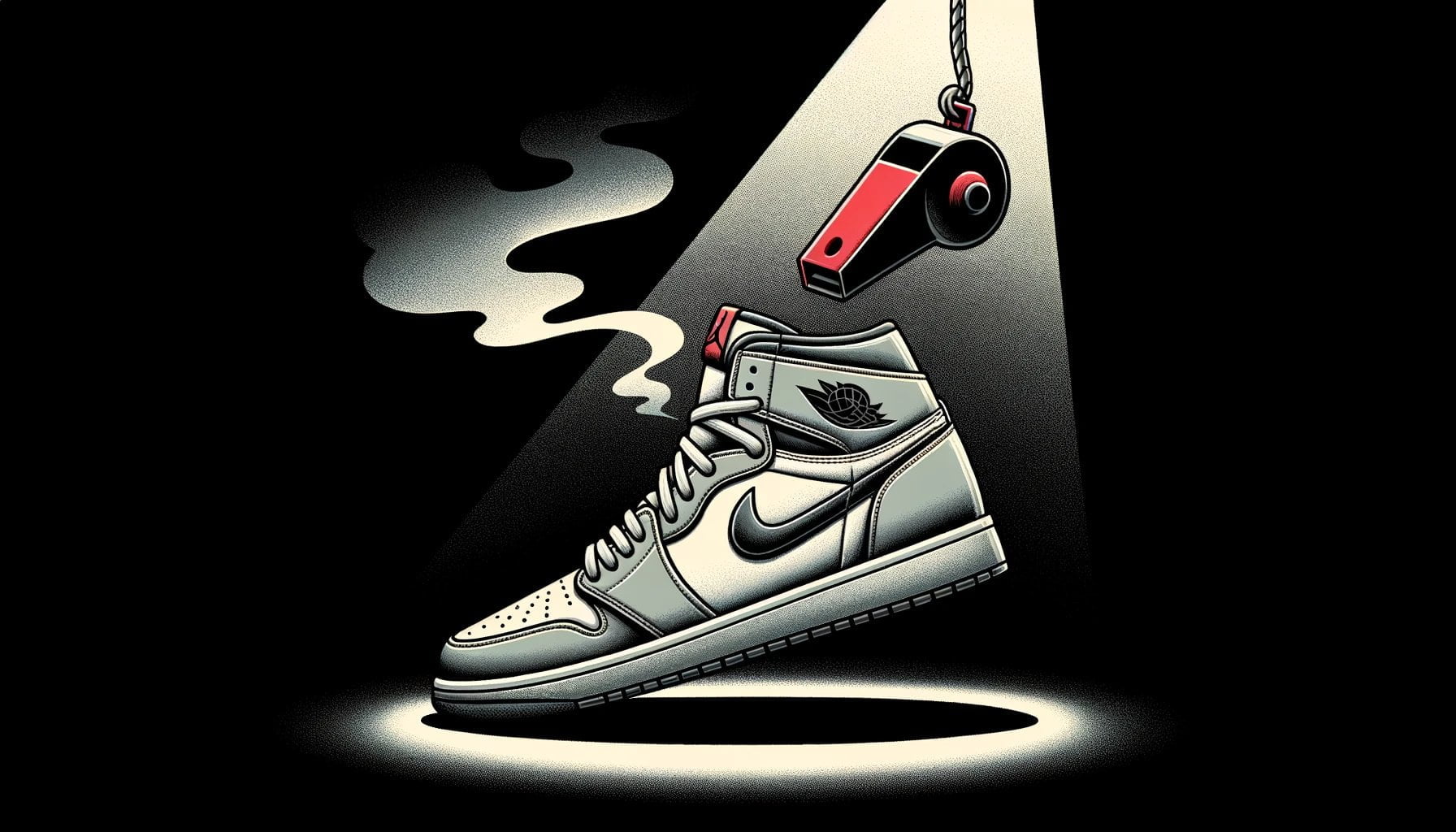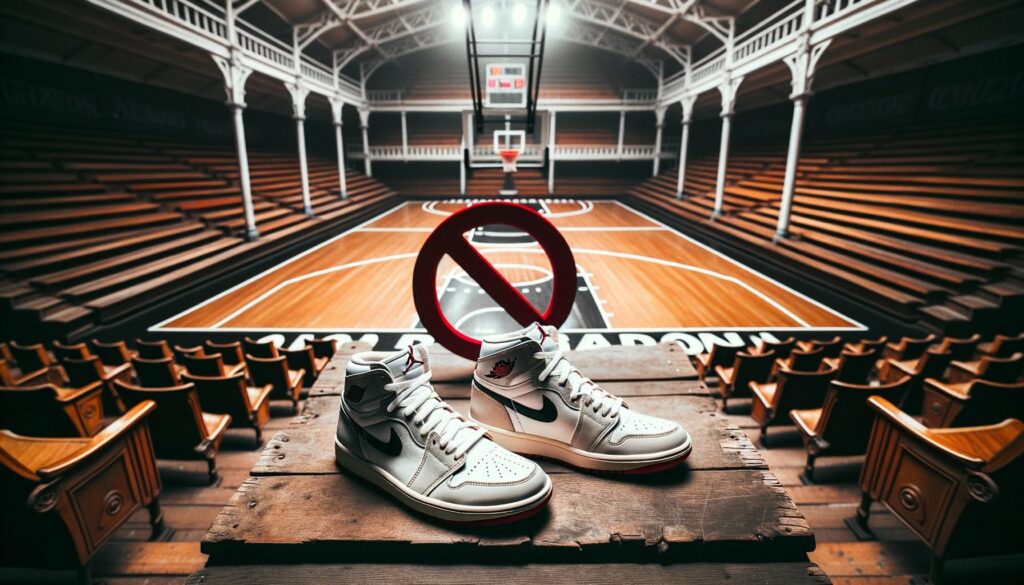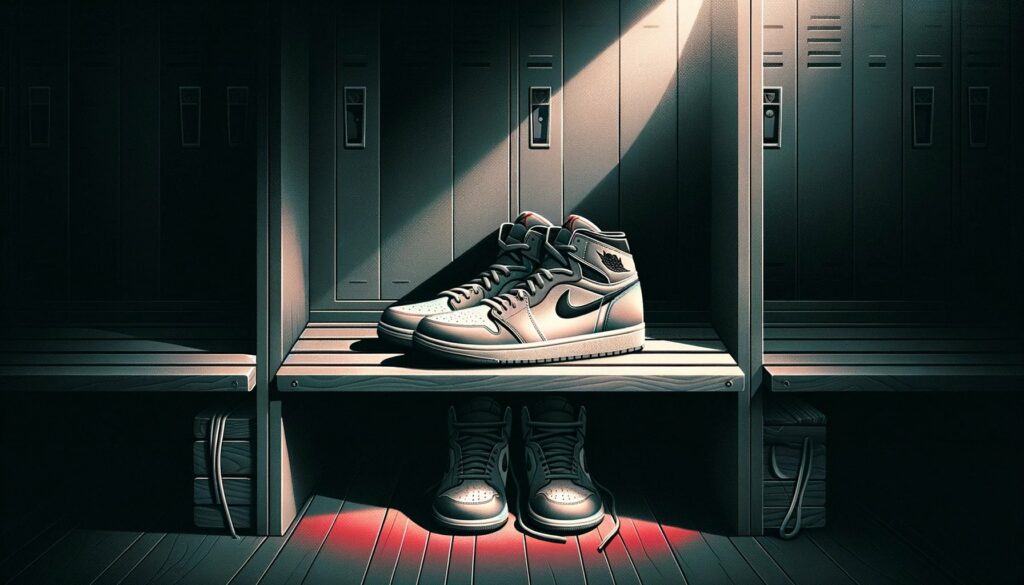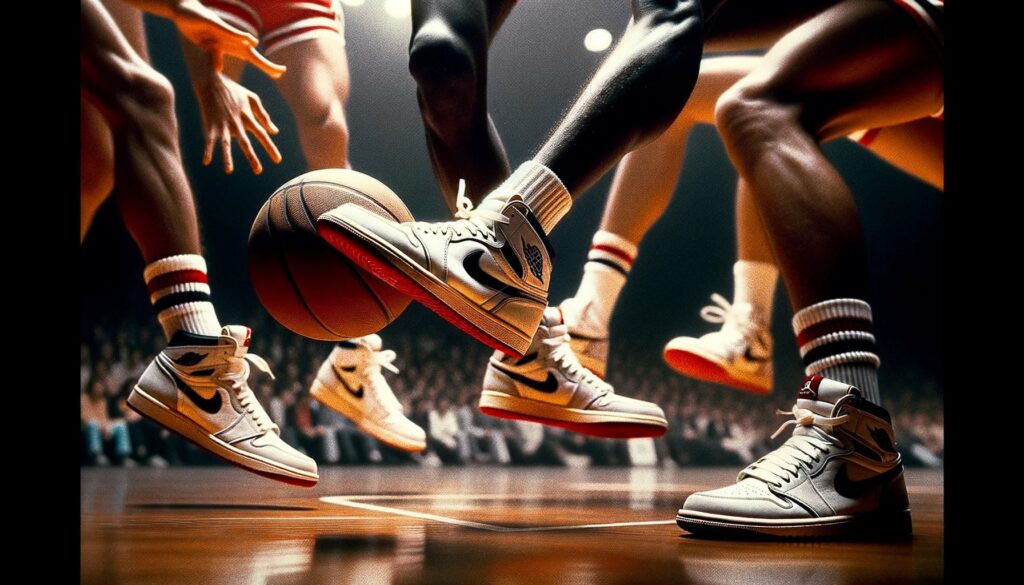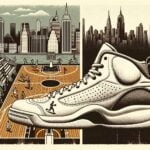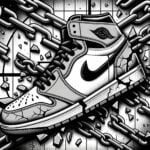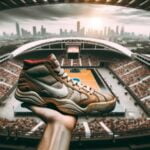Discover the captivating story behind the ban on the Jordan 1 and how it propelled the iconic sneaker to legendary status within the sneaker community. Uncover why the Jordan 1 faced prohibition and what factors contributed to its rise as a sought-after sneaker. As we delve into the rich history of this influential basketball shoe, we will unveil the intriguing reasons behind the Jordan 1’s prohibited journey and the lasting impact it has had on sneaker culture.
Why was Jordan 1 banned?
When it comes to iconic basketball shoes, few can rival the Air Jordan 1. This legendary sneaker, designed by Nike in collaboration with Michael Jordan, not only revolutionized the sneaker industry but also sparked controversy and intrigue with its ban by the NBA. But why was the Jordan 1 banned in the first place? Let’s dive into the captivating story behind this sneaker’s prohibited rise.
In the 1980s, Michael Jordan burst onto the NBA scene as a young, electrifying rookie. With his gravity-defying dunks and unmatched talent, he quickly became a fan favorite. However, his flashy footwear choice captivated more than just the fans. The Air Jordan 1, with its vibrant colors and bold design, violated the NBA’s strict uniform policy.
The league had a specific set of rules regarding player attire, mandating that basketball shoes should be primarily white. Nike’s game-changing creation, with its black and red colorway, stood in defiance of these regulations. As a result, the league levied a fine of $5,000 against Jordan for every game he wore the banned shoe.
Little did anyone expect that this ban would only serve to boost the popularity and status of the Air Jordan 1. Nike, with its marketing savvy, seized the opportunity and used the controversy surrounding the banned shoe to its advantage. They touted the shoe as the “Banned” version, hyping up its exclusivity and rebellious appeal. This brilliant move garnered even more attention and desire for the already coveted sneaker.
Fast forward to 2011, and Nike released a retro version of the Air Jordan 1 called the Air Jordan 1 Retro High OG “Banned.” The shoe, once forbidden on NBA courts, was now embraced by sneakerheads and basketball fans alike. Its history and the aura of exclusivity surrounding it made it a must-have item for collectors and enthusiasts.
It’s important to note that the ban on the Air Jordan 1 is a thing of the past. Today, anyone can proudly wear this iconic sneaker without fear of repercussions from the NBA. The once-forbidden shoe has transcended its ban and cemented its place in sneaker and basketball culture.
So why was the Jordan 1 banned? It all comes down to the NBA’s strict uniform policy and the Air Jordan 1’s refusal to conform. This ban, rather than stifling its rise, only served to elevate its status and create a lasting legacy within the sneaker community. The Air Jordan 1’s journey from being banned to becoming a symbol of rebellion and style solidifies its place as one of the most influential sneakers in history.
Did you know that the evolution of basketball shoes has come a long way since the beginning of the sport? If you’re curious about the very first basketball shoes that were worn by the pioneers of the game, look no further! Check out our collection of first basketball shoes. These iconic sneakers hold a special place in basketball history and are a must-have for any true basketball enthusiast. Don’t miss out on the opportunity to own a piece of basketball history. Visit our website to explore our selection of first basketball shoes and add them to your collection today. First Basketball Shoes
The Banned Jordan 1: Unveiling the Sneaker’s Prohibited Rise
The NBA’s Forbidden Fashion Statement
When it comes to iconic basketball shoes, the Air Jordan 1 is a legend in its own right. But did you know that this iconic sneaker was actually banned by the NBA? That’s right, back in the 1980s, when Michael Jordan first entered the league, his flashy kicks caused quite a stir among basketball purists and league officials alike.
The Violation and the Fine
You see, the Air Jordan 1 violated the NBA’s strict uniform policy. Back in those days, players were required to wear shoes that matched their team’s color scheme. With its bold red and black colorway, the Jordan 1 stood out like a sore thumb. The league took notice, and so did the hefty fines that came along with it. Michael Jordan found himself being slapped with a $5,000 fine for every game he wore the forbidden sneakers.
Nike’s Brilliant Marketing Move
But here’s where the story takes an interesting turn. Nike, the brand behind the Air Jordan line, saw an opportunity in the controversy surrounding the banned shoes. Rather than shying away from the ban, they embraced it. They cleverly marketed the Air Jordan 1 as the “Banned” shoe, fueling curiosity and intrigue among sneakerheads and basketball fans alike.
The Rise of an Icon
Fast forward to the present day, and the “Banned” Air Jordan 1 has become a holy grail for sneaker enthusiasts. It has cemented its place as an icon in both the basketball and fashion worlds. The story behind its ban has only added to its appeal, turning it into a must-have for collectors and a coveted item for enthusiasts who want to own a piece of sneaker history.
The Retro “Banned” Release
To further capitalize on the shoe’s legendary status, Nike released a retro version of the Air Jordan 1 in 2011. Aptly named the Air Jordan 1 Retro High OG “Banned,” this reissue allowed fans to experience a piece of basketball history firsthand. The retro release reaffirmed the shoe’s impact and solidified its place as a symbol of rebellion against the status quo.
The Ban Lifted
It’s worth noting that the ban on the Air Jordan 1 has since been lifted, allowing players to proudly wear this iconic sneaker on the court. The shoe’s journey from being banned to becoming a revered classic showcases the power of fashion and the enduring influence of sneaker culture.
Exploring the Reasons Behind the Ban
Now that we’ve established the context and the impact of the banned Air Jordan 1, let’s delve deeper into the reasons behind the NBA’s decision to prohibit such an iconic shoe. Understanding the factors that led to the ban sheds light on the cultural and societal dynamics of the time.
The Clash of Tradition and Individuality
The NBA is an institution deeply rooted in tradition and conformity. Uniform policies exist to ensure a level playing field and to prevent distractions on the court. When Michael Jordan burst onto the scene with his audacious fashion choices, it challenged the status quo and ruffled some feathers. The Air Jordan 1’s bold design was a departure from the standard footwear, making it an easy target for the league.
The Power of Marketing and Hype
Nike’s bold move to embrace the ban and market the Air Jordan 1 as the “Banned” shoe is a testament to the power of marketing. By turning a restriction into a selling point, Nike created a sense of exclusivity and intrigue that contributed to the shoe’s enduring popularity. The ban magnified the sneaker’s rebellious image, making it a must-have for those seeking to defy convention.
The Legacy of Michael Jordan
It’s impossible to ignore the impact of Michael Jordan himself in the story behind the banned Air Jordan 1. His electrifying playing style and charismatic personality made him a captivating figure both on and off the court. Jordan’s association with the forbidden shoe added an aura of mystique and rebelliousness to the Air Jordan 1, propelling it to new heights of fame.
Unveiling the Sneaker’s Prohibited Rise
In conclusion, the ban on the Air Jordan 1 by the NBA was a pivotal moment in the history of sneaker culture. It sparked a fervor among fans and collectors, turning a forbidden object into a symbol of individuality and self-expression. The daring decision by Nike to market the shoe as the “Banned” Air Jordan 1 only added to its allure, making it one of the most sought-after and beloved sneakers in the world. The ban may have been a hurdle, but it ultimately propelled the Air Jordan 1 to legendary status within the sneaker community, ensuring its place in the annals of both sports and fashion history.
The Bans Behind the Legend: Unearthing the Story of the Jordan 1
In the captivating world of sneaker culture, few shoes hold as much intrigue as the iconic Air Jordan 1. Steeped in controversy and rebellion, this legendary sneaker owes much of its mystique to its ban by the NBA. But why was the Jordan 1 banned, and how did this prohibition catapult it to unparalleled fame within the sneaker community? Let’s dive into the captivating story behind the Air Jordan 1’s prohibited rise.
Unraveling the Ban
It all began in the 1980s when the NBA implemented a strict uniform policy. According to this rule, players were required to wear predominantly white shoes on the court, an attempt to maintain a sense of “uniformity of uniform.” However, the audacious design of the Air Jordan 1, with its bold black and red colorway, flagrantly disregarded this regulation.
The NBA wasted no time in penalizing Michael Jordan for flaunting the rules. Every time he stepped onto the court wearing the forbidden Air Jordan 1, a hefty fine of $5,000 awaited him. But this unexpected hindrance only served to stoke the flames of curiosity among consumers and sneaker enthusiasts alike.
The Colorway Conundrum
Contrary to popular belief, the ban on the Air Jordan 1 was not attributed to its overall design. Rather, it was the sneaker’s color blocking that raised red flags. The black and red combination clashed with the league’s preference for predominantly white footwear, leading to the forbidden status of this rebellious sneaker.
Fueling the Fire
While the NBA’s ban aimed to suppress the Air Jordan 1’s influence on the court, it inadvertently sparked an unprecedented level of consumer interest. The ban amplified the allure of the Jordan 1, transforming it into a symbol of rebellion and nonconformity. With each fine imposed on Michael Jordan, the legend of the “Banned” shoe grew stronger, captivating the attention of sneaker enthusiasts worldwide.
Shifting the Narrative
Recognizing the immense marketing potential behind this captivating narrative, Nike swiftly pivoted and cleverly embraced the ban. They astutely marketed the Air Jordan 1 as the renegade sneaker that pushed boundaries and defied tradition. By reframing the ban as a badge of honor, Nike managed to turn a setback into an opportunity, forever etching the Air Jordan 1 into the annals of sneaker history.
The Rise to Legendary Status
The ban on the Air Jordan 1 showcased a clash between tradition and individuality, leaving an indelible mark on sneaker and fashion culture. The association with Michael Jordan, a basketball prodigy who defied gravity, further deepened the mystique and rebelliousness of the Air Jordan 1.
As time went on, the legend of the Jordan 1 grew, culminating in the release of a retro version in 2011. This marked the culmination of the sneaker’s journey from banned obscurity to a veritable holy grail for sneaker enthusiasts. Today, the Air Jordan 1 enjoys an unrivaled status and remains an ever-present force within sneaker culture.
Conclusion: A Legacy Born from Bans
The Jordan 1’s banned status ignited a spark that propelled it to legendary heights. The daring design, the fines imposed on Michael Jordan, and Nike’s adept marketing maneuver all converged to transform a shoe into a symbol of rebellion and individuality. The ban exemplifies the power of marketing, the clash between tradition and innovation, and the enduring appeal of defying the status quo.
Now that we’ve unveiled the captivating story behind the Air Jordan 1’s prohibited rise, it becomes clear why this sneaker continues to hold an unparalleled place in both sporting and fashion history.
FAQ
Question 1
Why was the Air Jordan 1 banned by the NBA?
Answer 1
The Air Jordan 1 was banned by the NBA due to its violation of the league’s uniform policy. The shoe’s bold black and red design did not adhere to the rule requiring players to wear primarily white shoes. As a result, Michael Jordan, the iconic player associated with the shoe, faced a fine of $5,000 per game he wore the Air Jordan 1 on the court.
Question 2
Was it the design or color that led to the ban on the Air Jordan 1?
Answer 2
The ban on the Air Jordan 1 was specifically due to issues with its color blocking, rather than the design itself. The shoe’s black and red colorway violated the NBA’s “uniformity of uniform rule.” This rule required players to wear primarily white shoes, making the Air Jordan 1’s color scheme non-compliant.
Question 3
What happened after the NBA banned the Air Jordan 1?
Answer 3
Following the ban, Nike seized the controversy surrounding the Air Jordan 1 and effectively marketed it as the “Banned” shoe. This ban, combined with Michael Jordan’s incredible talent and popularity, further contributed to the shoe’s rise to legendary status. In 2011, Nike released a retro version of the Air Jordan 1 called the Air Jordan 1 Retro High OG “Banned.”
Question 4
Has the ban on the Air Jordan 1 been lifted?
Answer 4
Yes, the ban on the Air Jordan 1 has been lifted. The shoe is now allowed to be worn both on and off the court. Over the years, the Air Jordan 1 has become a highly sought-after and iconic sneaker, thanks in part to its association with the banned status and the captivating story behind it.
Question 5
What was the precursor to the Air Jordan 1 that was actually banned for its color scheme?
Answer 5
The sneaker that was originally banned for its color scheme was the Jordan 1 precursor, the Nike Air Ship. The Air Ship featured a similar black and red colorway that violated the NBA’s uniform policy. However, it is the Air Jordan 1 that gained significant attention and popularity, solidifying its place in sneaker history.
- Star Ring Trends: Etsy vs Amazon - March 28, 2025
- Boost Pollinator Habitats: Baby Blue Eyes Sustainable Farming Guide - March 28, 2025
- Protect Big Black Bears: Effective Conservation Strategies - March 28, 2025
